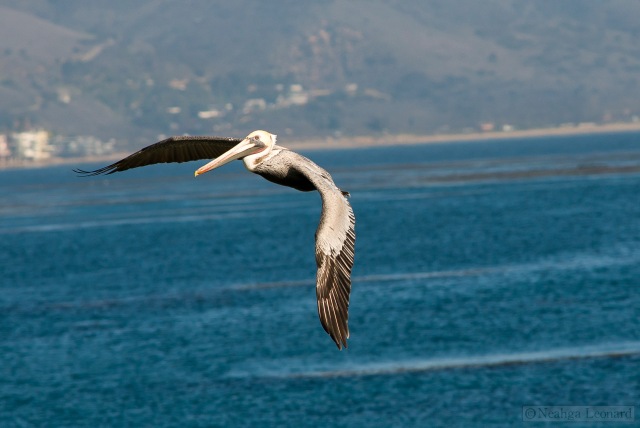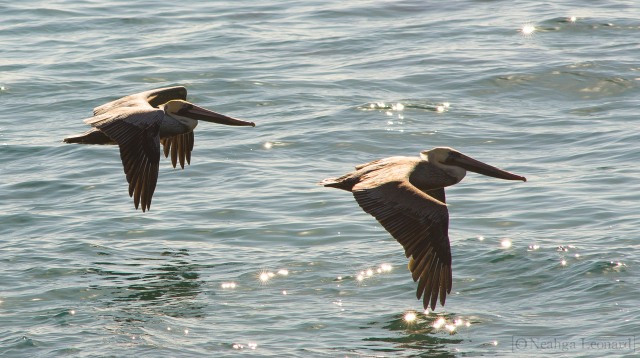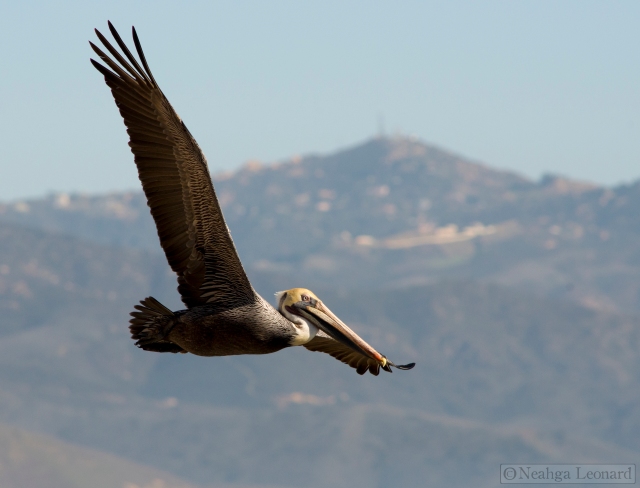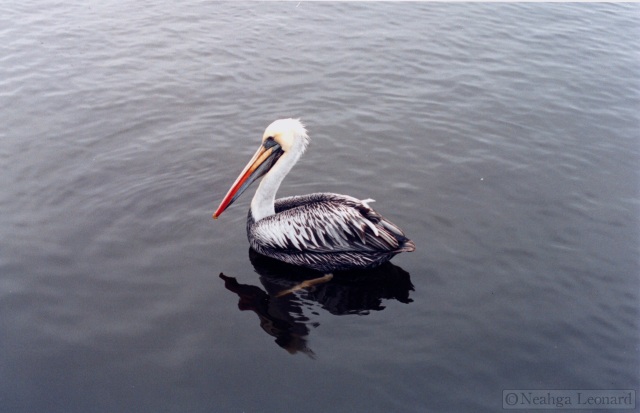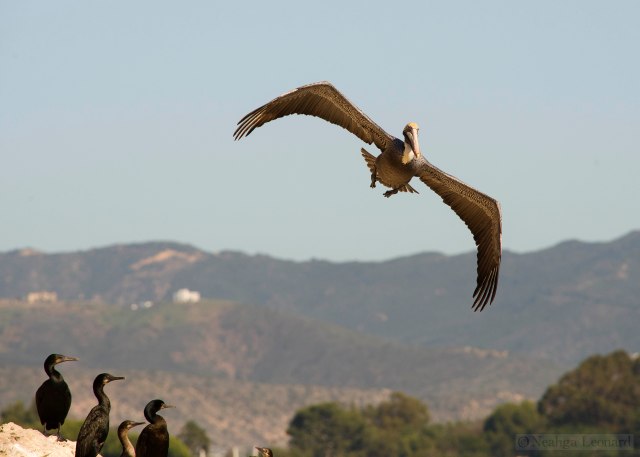I am a big fan of Pelicans. They may be my favorite birds, though claiming anything to be a favorite is a little silly. I like all pelicans, but it is the Brown Pelican (Pelecanus occidentalis) and its cousin the Peruvian Pelican (Pelecanus thagus) that are at the top of my pelican list.
The Brown Pelican is the smallest of the 8 species of pelican in the world. Small is a relative term when it comes to pelicans, the Brown Pelican weighs up to 12 pounds (5.4kg) and has a wingspan up to a little more than 8 feet (2.4 meters). It and the Peruvian Pelican, which is nearly twice the size of the Brown Pelican, have a hunting strategy that differs from all other pelicans and one that is great fun to watch.
Pelicans are extremely successful apex predators. Their primary hunting tool, their beaks, have remained relatively unchanged for 30 million years as evidenced by a remarkably intact fossil from southern France. Pelicans have the largest beaks of any bird, a long affair with a sharp hook at the end and a large pouch underneath. Like baleen whales pelicans gulp huge mouthfuls of water and food (fish for pelicans) and strain the food from the water. Most pelicans do their fishing from the surface of the water, floating along like immense ducks, dipping their heads into schools of fish to grab a meal.
Brown Pelicans have an entirely different strategy.

Brown Pelican diving for fish. View the full-size image to see panicked fish leaping clear of the water to escape the pelican
Pelicans can see through the water well enough to spot fish near the surface. Brown and Peruvian pelicans hunt from the air in a delightfully cavalier fashion. When they spot a school of fish they dive for them, but this is not the elegant, dagger like dive of the gannet, this is the lumbering crash of a falling boulder. They fold their wings and plummet from the sky, more-or-less beak first, impacting with a great explosion of water. Their version of a dive is more akin to a drunken stumble into the pool than it is the clean Olympian dive. Despite the seeming lack of grace, their hunting strategy is effective.
While the dive of a pelican exhibits a singular lack of grace, they are elegant precision flyers. Pelicans of all species are probably best known for their surface skimming flight.
Being large, heavy birds (the largest species of pelicans weigh upwards of 20 pounds), pelicans use as little energy as possible when flying. We see them most often flying low over the water, wings nearly touching the surface of the ocean. The weight of their bodies compresses the air underneath them, making it more dense. As a result the air provides more lift, in effect they are riding on their own cushion of air. We make vehicles that do this, hover craft, and far more impressively, the Soviet ekranoplan vehicles.
Pelicans are adept surfers, riding the slight updraft of air above the curl of breaking waves.
Large air-sacks under the skin and hollow bones help pelicans float and a tough layer of fiber in their breast muscles helps pelicans keep their wings extended during long flights. Like other large birds pelicans search out thermals and other updrafts to climb into the sky for long flights.
I find Brown Pelicans to be surprisingly colorful.
Their heads have yellow, red, and a bluish tint as well. I suspect that the vibrancy of the colors changes in accordance with mating season. Peruvian Pelicans also share this colorful head, perhaps being even more colorful.
Pelicans have a primeval aspect to them. We no-longer have Pterosaurs, but looking at Pelicans I feel a sense of what it must have been like when the sky was full of those wide-winged, short-tailed flying creatures.
